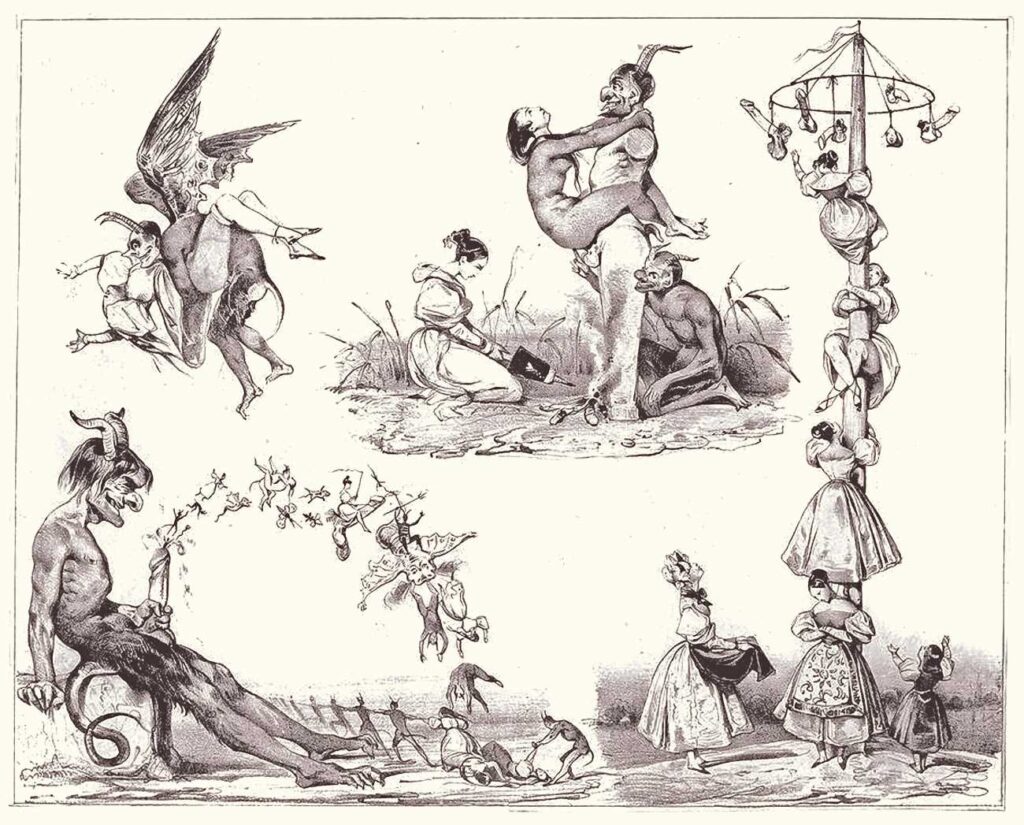The Devilries
Content warning: this post contains images of explicit sex (including scat) & racial caricatures
Okay, so, you remember my post about demon copulation and how it’s influences extended into the Romantic and Gothic periods like Fuseli’s The Nightmare? Well, I was desperately trying to find the source behind the illustration (right) of this demon carrying his gargantuan penis in a cart while a woman gazes upon it with delight (sometimes dick really is that pretty).
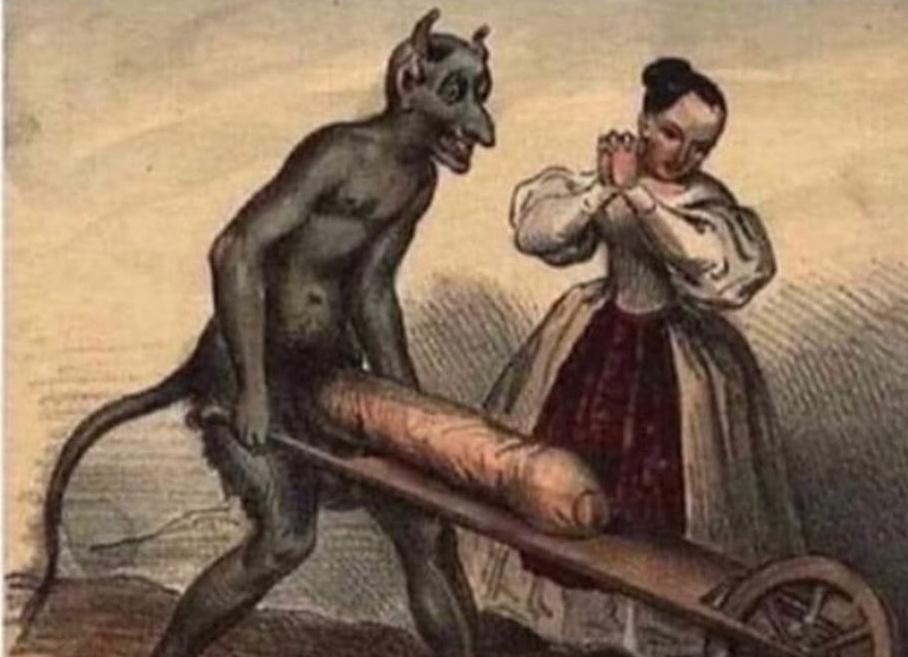
It appears I’ve stumbled across the jackpot of monster fucking erotic art with Eugène Modeste Edmond Lepoittevin’s Les Diables de Lithographies (Devilish Lithographs) (1832)!
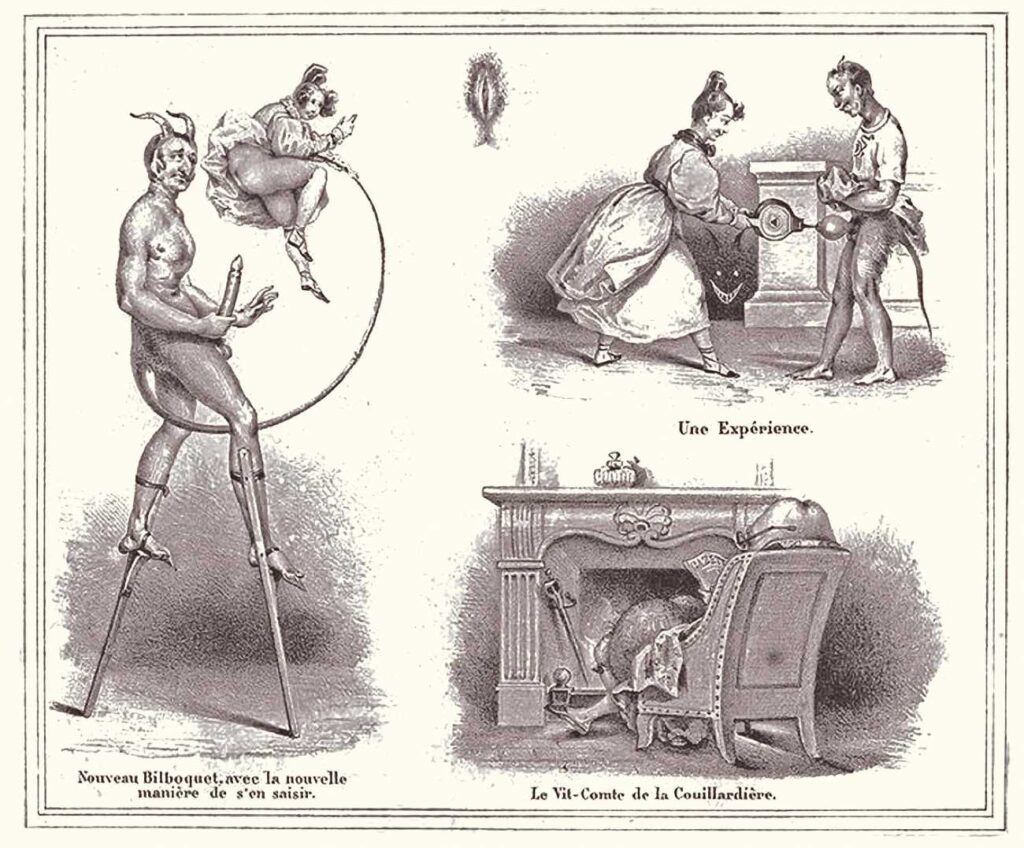
In the wake of the Romantic era which produced popular books like Faustus and Mephistopheles, demons and devils were still freshly on the minds of Europeans. In early 1800s France, Eugène Modeste Edmond Lepoittevin published Les Diables de Lithographies (1832).2 At this time, Lepoittevin (born Poidevin, but preferred the bourgeoisie Lepoittevin or Le Poittevin) was known by polite society as an accomplished landscape and marine painter.3 He wasn’t just some shmuck: while still in his twenties, Lepoittevin was commissioned by the State to paint official works for the historical museum at Versailles and in 1849, he was appointed as Peintre de la Marine for the French Ministry of Defense.4
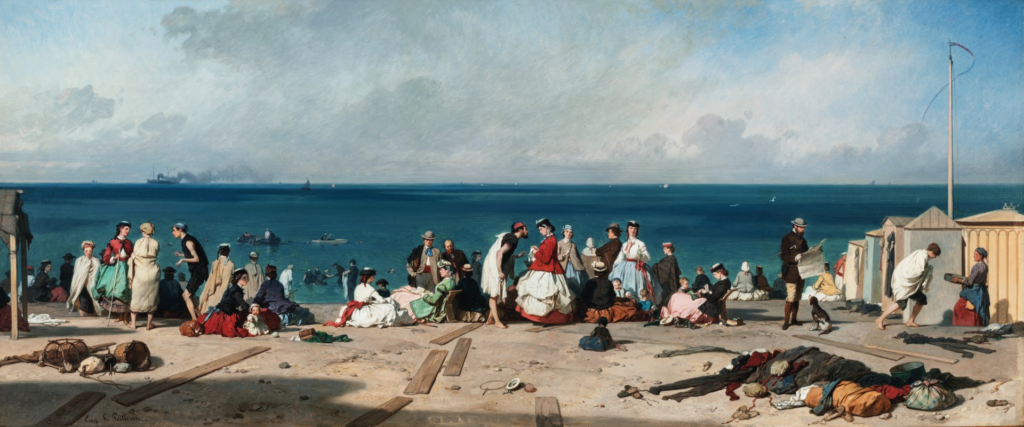
However, Lepoittevin appeared to have a more raunchy and hidden side to him that dabbled not just in boats and calm shorelines. No, Lepoittevin also enjoyed drawing devils and demons engaging in erotic debauchery. Though many claim his first devilishly diabolic album was Les Diables de Lithographies in 1832, it appears as though it was actually Charges et Décharges diaboliques, which was published in 1830.5 This first portfolio consisted of 12 obscene lithographs (that over a hundred years later, would be banned from the U.S, but we’ll circle back to that soon enough).
Two years later, Lepoittevin published Les Diables de Lithographies, which contained 80 illustrations on 12 black and white numbered lithographed plates, with two supplemental plates. In total, the album contained 14 plates with 115 illustrations (that’s a lot of dicks and vaginas)! Les Diables was an immediate hit: it was so popular that Lepoittevin followed up his devilries with Les diableries érotiques; Petits sujets des diableries; Bizarreries diaboliques; and Encore des Diableries. However, despite it’s success and popularity, Lepoittevin’s work is hard to come by as few of the copies survived, and even fewer in completion.6
In fact, Lepoittevin’s work was so raunchy that his first album Charges et Décharges diaboliques was banned in the United States during 1951. The portfolio was seized by customs in New York, but later released by the Kinsey Institute 7 years later following the Federal Court case United States v. 31 Photographs.7
Les Diables de Lithographies
So, without further ado, here is Lepoittevin’s Les Diables de Lithographies~

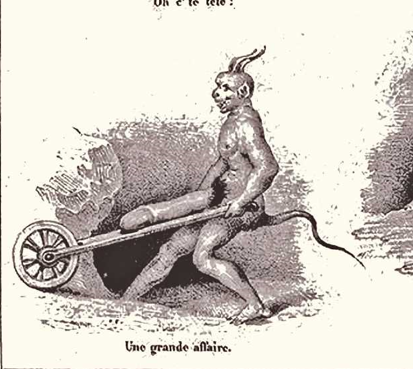
If I had a nickel for every time I saw an illustration of a demon carried his overtly large penis in a wheelbarrow, I’d have two nickels. Which isn’t a lot, but still strange it happened more than once.
In all seriousness, though the artistic styles aren’t one and the same, the similarities points to two possibilities (as discussed by the Reddit poster):
- Lepoittevin may have anonymously produced the first illustration.
- Imitator artists took inspiration from Lepoittevin’s very famous work (which contained an image of a demon carting about his huge hog as seen above) and duplicated it within their own.
Though I am not an art expert (I mean, I almost minored in art history, so that should count for something, no?), I find myself leaning more towards the theory that Lepoittevin published the initial piece anonymously. The reason for this is because though the two pieces side by side don’t look similar, at least stylistically, the first piece does share artistic stylization within Lepoittevin’s Devilries. Take, for example, the way Lepoittevin draws women, as seen below. They look mighty similar, no? Down to the woman’s neat hair pulled back into a bun and her coy and delighted expression. They even both share widow peaks!


Likewise, though Lepoittevin’s demons appear in a varied manner, many of them share (what can only be attributed to) racially characterized hook-noses; curved, sharp ears; long, tapered tails; and thick fur growing along their mid-region and legs.
(It should be noted that racism played a heavy role in the construction of monstrosity, especially in the West who used monstrosity as a way to not only Other ethnic minorities, but fetishize them as well. Racial fetishization and monstrosity will be discussed further in another post, because the lengthy topic deserves to be focused on individually. However, I would be remiss to not at least call attention to it here where it is present within the illustrations of people within colonial empires like France, especially within Lepoittevin’s work).

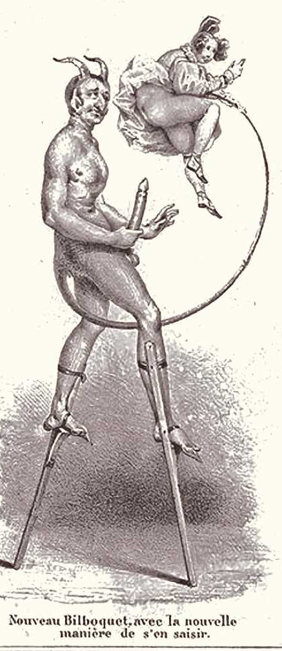
Werewolf in London, Devil in Paris
Lepoittevin was not the only person in France to be smitten by devils and demons fucking women. Rather, it seemed many artists in France were fixated on drawing depictions of carnal copulation. I suppose that checks out because who could possibly be more horny than the Devil besides The French.
Artists like A. de Bayalos’s Diablotins and Michel Delaporte’s Récréations diabolico-fantasmagoriques carried on Lepoittevin’s diabolic torch.8 Achille Devéria, a well-known artist associated with some of the best erotic illustration from the 1840s, would publish his own erotic devil artwork in 1835 called Diabolico foutro-manie, which literally translates to “Diabolic Fuck-Mania”.9 A little off topic, but, Achille was profoundly horny: the man was a prolific artist, producing well over 3,000 works in his career from book illustrations like Goethe’s Faust (1828) to a compendium of erotica titled Imagerie galante (1830) to illustrating the lesbian erotic tale Gamiani (1833). Dude just really loved to draw fuckin, didn’t matter who was doing it (including images of bestiality).
Approximately 50 years later, Belgian artist Félicien Rops produced his own erotic work featuring paranormal beings through his Les Diaboliques and Les Sataniques series. I know what you’re thinking: Rops is from Belgium, so he’s not part of this French movement of perverts. Well, he studied in France and in 1874 moved there, so he’s an honorary Frenchie.
Rops was a leading avant-garde artist and was best known for his saucy etchings and book illustrations that combined the macabre with the erotic. Rops produced Les Diaboliques for the French novelist, poet, short story writer, and literary critic Jules-Amédée Barbey d’Aurevilly specifically his widely popular short story collection.10 Meanwhile, Rops’ Les Sataniques was produced of the artists own volition, independent from any book publication or literary work. Though Rops was an acclaimed artist, art historians would define him by his Les Diaboliques and Les Sataniques series. Art historian Robert L. Delevoy wrote: “His etchings for Les Diaboliques by Barbey d’Aurevilly are regarded as some of the best illustrative work ever done.”11
Works Cited
- Artbrutist. “Who painted this? I saw it on the internet and I need to know.” Reddit. November 24th, 2023. https://www.reddit.com/r/WhatIsThisPainting/comments/cmzftd/who_painted_this_i_saw_it_on_the_internet_and_i/
- “Tricky Dicks and Flying Vaginas: The Satanic Erotica of ‘Les Diables de Lithographies”, Dangerous Minds, 31 July 2017, https://dangerousminds.net/comments/tricky_dicks_and_flying_vaginas_the_satanic_erotica_of_les_diables_de_litho#disqus_thread
- “Eugène Lepoittevin”, Honesterotica, November 23rd, 2023. https://honesterotica.com/illustrator/eugene-lepoittevin
- “Eugène Modeste Edmond Poidevin (1806-1870)”. Bibliothèque nationale de France. Retrieved February 27, 2017.
- Nicolas Valazza. Banned Books. “Charges et Décharges diaboliques by Eugène Lepoitevin (1830)”. https://bannedbooks.indiana.edu/items/show/23
- “Les diables de lithographies”, honesterotica, November 23rd, 2023, https://honesterotica.com/portfolios/909
- Nicolas Valazza. Banned Books. “Charges et Décharges diaboliques by Eugène Lepoitevin (1830)”. https://bannedbooks.indiana.edu/items/show/23
- “Les diables de lithographies”, honesterotica, November 23rd, 2023, https://honesterotica.com/portfolios/909
- “Achille Devéria”, honesterotica, November 23rd, 2023, https://honesterotica.com/illustrator/achille-deveria
- Alric Delaporte (2014) Les Diaboliques de Félicien Rops. Master Thesis, University of Paris, Panthéon-Sorbonne. https://hicsa.univ-paris1.fr/documents/file/JE%20Meneux%20Master%202014/3-Delaporte-Diaboliques%20Rops.pdf
- Patrick Bade (2003) Félicien Rops. Parkstone Press Ltd, New York, 95 pp.
